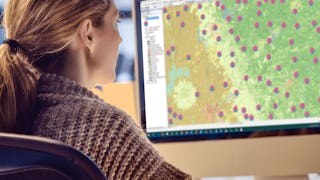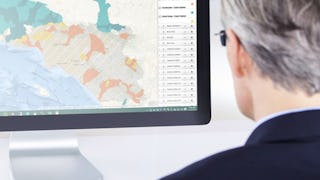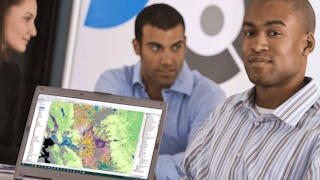Updated in May 2025.
This course now features Coursera Coach! A smarter way to learn with interactive, real-time conversations that help you test your knowledge, challenge assumptions, and deepen your understanding as you progress through the course. Dive into spatial data analysis with our extensive ArcGIS Desktop course. Begin with an introduction to the core concepts and functionalities of ArcGIS Desktop, ensuring a solid foundation for understanding spatial data. As you progress, you'll explore various methods to access, display, and manipulate spatial data, including raster and vector data formats. You'll be equipped to perform comprehensive spatial analyses by mastering these techniques. The course then transitions to more advanced geoprocessing tasks, where you'll learn about spatial statistics and how to automate processes using Model Builder. These skills are essential for efficiently managing and analyzing large datasets. You'll also gain proficiency in creating informative and visually appealing maps, using base maps, and presenting spatial data effectively. Each module is designed to build upon the last, ensuring a seamless learning experience that enhances your GIS capabilities. Throughout the course, you'll engage with practical examples and hands-on exercises, solidifying your understanding of theoretical concepts through real-world applications. By the end, you'll be proficient in using ArcGIS Desktop for a wide range of spatial analysis tasks, ready to apply these skills in various professional settings. Whether you're new to GIS or looking to enhance your existing skills, this course offers the comprehensive training you need to succeed. This course is designed for GIS professionals, environmental scientists, urban planners, and anyone interested in spatial data analysis. No prior experience with ArcGIS Desktop is required, but a basic understanding of geography and data analysis concepts will be beneficial.


















